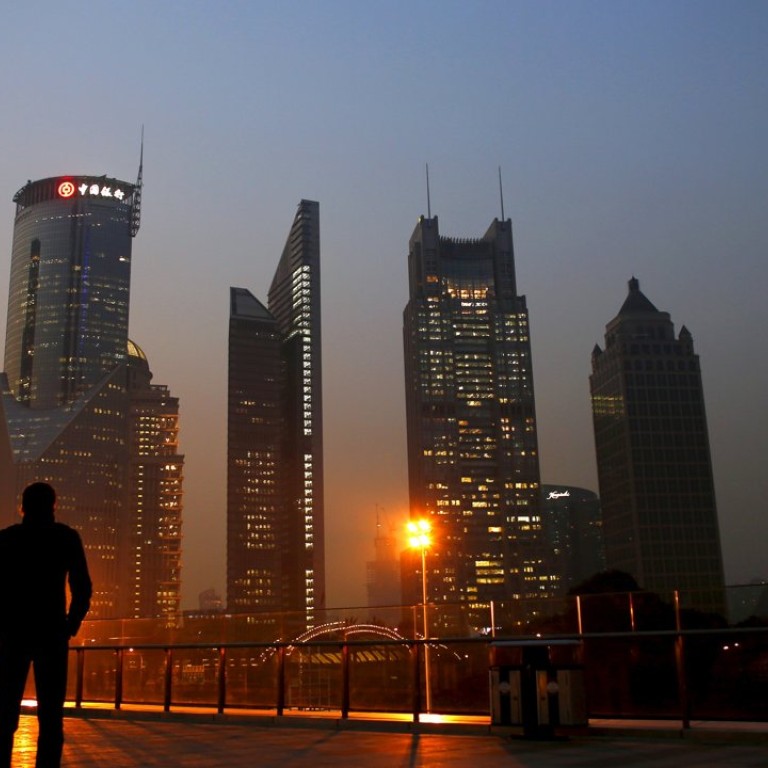
Battle lines are drawn between the ‘super bears’ and Chinese authorities over 2.51 trillion yuan lending spree
China’s credit growth is worrying, but an immediate crisis is not likely, say analysts
While the “super bears” may not be able to win a quick victory over Chinese authorities, they may be correct in their logic, analysts say.
Official figures shows Chinese banks were armed with a record high, fresh lending quota of 2.51 trillion yuan (HK$3 trillion) in January, an unusual monetary easing move that reminded the market of the first quarter of 2009 when Beijing opened the credit spigot to finance the 4 trillion yuan stimulus package in response to the Global Financial Crisis.
However, market players, particularly the “China bears” are questioning whether the old monetary tricks will be effective in kick-starting an economy already suffering from oversupply, excessive liquidity, and geographical and industrial sector imbalances.
READ MORE: Chinese banks hand out record HK$3 trillion of loans in bid to bolster mainland’s slowing economy
Kyle Bass, the hedge fund manager who made his fame by predicting and profiting fromthe US subprime mortgage crisis, has added to the bearish comments on China, saying credit on the mainland has reached its near-term limit and that the Chinese banking system will experience a loss cycle that will have profound implications for the rest of the world.
He also believes China’s banks are “months away from a danger zone” that could see US$3.5 trillion in equity vanish, resulting in losses more than four times those suffered by the US banks during subprime crisis.
Watch: China’s economic growth slowest in 25 years
Hong Hao, chief strategist with Bocom International Hong Kong, said that while Bass’s arguments have some logic, his conclusions have exaggerated the problem. “Systematic risks are unlikely to flare up in one shot. It comes in waves,” Hong said.
“Given that China’s credit to private, non-financial sectors stood at 132 trillion yuan in Q2 2015, a 5 per cent interest rate will make the interest payment 6.5 trillion yuan. Meanwhile, China’s GDP of 73 trillion yuan, growing at 8 per cent nominal, will yield roughly 6 trillion yuan in new GDP,” Hong wrote in a note on Wednesday morning.
“That is, China’s pro-forma interest payment burden is now roughly the same as the GDP increase,” he added.
“Imagine if credit goes on expanding while GDP growth slows down – the result is worrying,” Hong said. “The dampened banking sector in both the mainland and Hong Kong markets reflects people’s concern on this issue, and it would be hard to reverse the market expectation.”
Systematic risks are unlikely to flare up in one shot. It comes in waves
Wang Tao, an economist with UBS, said the risk of an immediate systematic financial crisis is very small due to “high domestic saving and ample banking liquidity, extensive government ownership of banks and many debtors, and capital controls.”
“The above [factors] will enable slow recognition of non-performing loans with banks continuing to lend to the economy while raising more capital to help speed up debt write-off’s over time,” she wrote in a research report published on Tuesday.
READ MORE: China’s commercial banks face HK$1.45 trillion in ‘non-performing loans’: bad debts rise to highest level since 2009
“Banking sector losses should be derived from bad banking credit rather than total system assets, which would be much smaller than currently expected by some. More importantly, banks have ample liquidity and do not have to recognise bad debt all at once, and do not require an immediate large capital injection,” the report said.
“Notwithstanding serious depreciation pressures, we expect the RMB exchange rate to depreciate modestly with the help of persistent current account surplus, tighter capital controls and some loss of reserves,” Wang wrote in the report.
As for the Chinese stock markets, interest rate-sensitive sectors such as banks and property should be the early movers on the signal that China is again expanding credit, Hong said.
“Even though the gain in these sectors tends to spill into other sectors as the market reacts to the news, their peaking relative performance suggests that the [selling on bad news] phase should ensue soon. As such, we should trade but not own this relief rally,” Hong wrote in the note.

